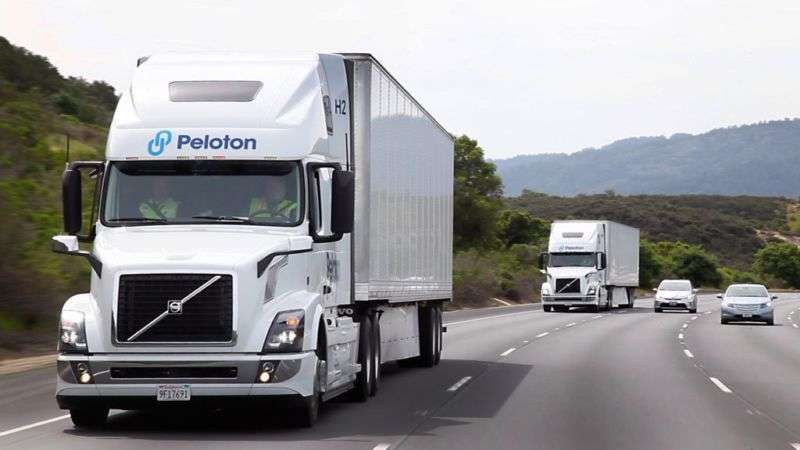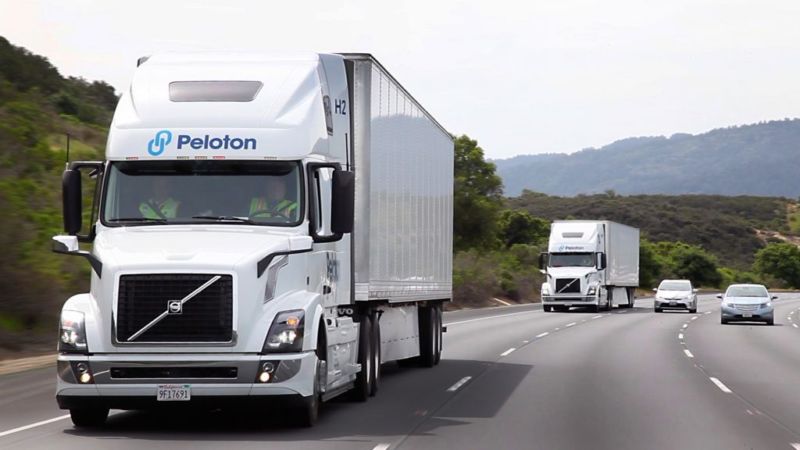
This semi-autonomous truck tech could seriously boost fuel efficiency

Enlarge (credit: Peloton)
Hype necessarily recedes as the blunt realities of actually developing autonomous vehicles sets in. For the companies developing robotaxis, that means a scaling back of ambition (like Waymo) or the pushing back of timelines (just about every major OEM). In the trucking sector, we’ve seen this as a splash of cold water poured over the idea of driverless road trains speeding along highways. But a company called Peloton thinks that running two big rigs close together can still work—and still boost fuel efficiency and safety—as long as you keep human drivers in the cab and in the loop.
Although Peloton’s PlatoonPro tech involves some clever vehicle-to-vehicle (V2V) and vehicle-to-cloud (V2C) technology, it only counts as level 1 automation on the SAE scale. That’s because the system only links together the accelerating and braking functions in the platoon; the human driver in each cab is still responsible for steering and remains in charge.
Conceptually, the idea is an evolution of the adaptive cruise control system already fitted to many cars—and even some class 8 trucks—already on the road. These systems use information from a forward-looking radar to match the speed to a vehicle ahead, maintaining a constant gap between the two as the one in front speeds up or slows down. Peloton’s approach leverages this idea, but it adds the V2C element (using 4G).
Read 7 remaining paragraphs | Comments




